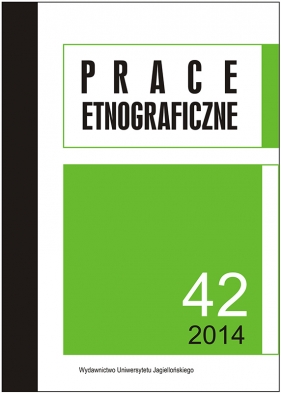Kategoria "sensualizmu" i nierozróżnialności na przykładzie "cudotwórczej" ikony św. Menasa w bułgarskim monasterze w Obriadowci. Rewizja inspirowana prawosławną teologią ikony
Artykuł Magdaleny Lubańskiej ukazał się w czasopismie Prace "Etnograficzne" 2014, t. 42, s. 1-16
http://www.ejournals.eu/Prace-Etnograficzne/Tom-42-2014/42-1...
ISSN 0083-4327
e-ISSN 2299-9558
Numer tematyczny: Antropologia religii
Redaktor tomu: Anna Niedźwiedź
Abstrakt ze strony wydawcy:
“Sensualism” and “Non-differentiation”: Two Anthropological Concepts and the Cult of the “Miracle-Working” Icon of St. Menas in the Bulgarian Monastery of Obriadovci. A Conceptual Revision Inspired by the Orthodox Christian Theology of the Icon
This article focuses on religious healing practices in the monastery of St. Menas in Sofia, Bulgaria which involve the touching of a famous miracle-working icon of a saint. I use the practice as a springboard for discussing the relevance of two anthropological concepts known as “sensualism” (Polish: sensualizm) and “non-differentiation” (Polish: nierozróżnialność) for describing multi-sensory religious imageries of pilgrims. Th e concept of sensualism was fi rst proposed by Stefan Czarnowski and relates to religious practice centred primarily on sensory experience. Non-differentiation as an anthropological concept has been adapted from Gadamer by the Polish anthropologist Joanna Tokarska-Bakir. The two concepts have been applied to analyses of non-official practices in Catholic religiosity, a fact which poses certain methodological problems when the concepts are applied to Orthodox Christianity. This article relies on the Orthodox theological concept of the icon to propose a revision to our treatment of those two useful concepts.
Słowa kluczowe: ikona, sensualizm, nierozróżnialność, św. Menas [Mina], prawosławna teologia, Bułgaria



